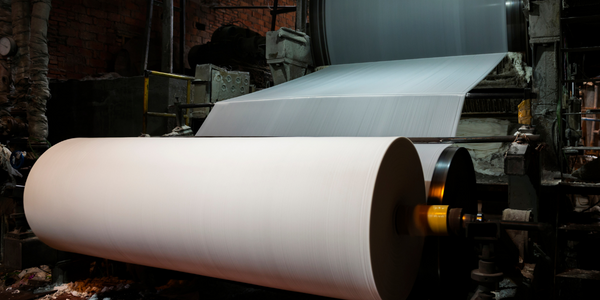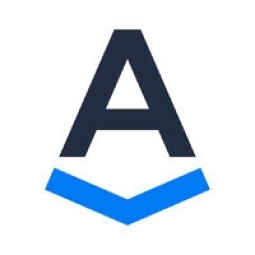Technology Category
- Infrastructure as a Service (IaaS) - Cloud Databases
- Processors & Edge Intelligence - Embedded & Edge Computers
Applicable Industries
- Finance & Insurance
- Paper & Pulp
Use Cases
- Traffic Monitoring
- Transportation Simulation
About The Customer
Aaction Traffic is a traffic control provider operating in Brisbane Metropolitan areas and throughout South East Queensland. The company is known for its certified trained personnel in Traffic Management Design and its ability to provide a fast response to emergency call-outs. Aaction Traffic prides itself on providing a safe working environment for clients and traffic controllers, backed by comprehensive OH&S policies. The company is committed to running safe and extremely efficient business operations. Their early adoption of technology from operations to accounting systems sets them apart from their competition.
The Challenge
Aaction Traffic, a traffic control provider in Brisbane Metropolitan and South East Queensland, was facing challenges with their traditional, manual business operations. The company, known for its commitment to safety and efficiency, was struggling with the limitations of paper-based processes. These processes were not only costly due to human errors but also required more employees, thus increasing operational costs. The manual system also delayed the delivery of documents to clients, as they had to wait for physical copies. Furthermore, the employees had to deal with issues such as incorrect pay and missing daily fares. The company also faced challenges with their scheduling process, which was managed through Google Sheets and required constant back-and-forth communication.
The Solution
In 2018, under the leadership of the new Managing Director, Paul Kelly, Aaction Traffic decided to transition to a digital solution. They adopted a cloud-based tech stack for their operations and accounting systems. They used Assignar for operations and MYOB for accounting. Assignar was used for forms, timesheets, dockets, and scheduling. This digital solution eliminated the need for paper, making the process more efficient and easy for the team. The digital docket in Assignar allowed the traffic controllers to submit their documents instantly, and the clients could receive a copy straight in their email. The cloud-based system also enabled the team to work from home. From a scheduling perspective, Assignar eliminated the need for back-and-forth communication. The platform allowed the scheduler to easily check who had declined or accepted shifts, eliminating the need to chase them up.
Operational Impact
Quantitative Benefit

Case Study missing?
Start adding your own!
Register with your work email and create a new case study profile for your business.
Related Case Studies.

Case Study
Wireless Improves Efficiency in Compressed Air Systems
Hollingsworth and Vose wanted to improve the efficiency of their compressed air system, lower the electricity expense component of manufacturing cost in their commodity industry, and conserve energy leading to lowered greenhouse gas emissions. Compressed air systems degrade over time and become leaky and inefficient. Hollingsworth and Vose wanted to increase the frequency of system inspections without paying the high cost of manual labor.

Case Study
Real-time In-vehicle Monitoring
The telematic solution provides this vital premium-adjusting information. The solution also helps detect and deter vehicle or trailer theft – as soon as a theft occurs, monitoring personnel can alert the appropriate authorities, providing an exact location.“With more and more insurance companies and major fleet operators interested in monitoring driver behaviour on the grounds of road safety, efficient logistics and costs, the market for this type of device and associated e-business services is growing rapidly within Italy and the rest of Europe,” says Franco.“The insurance companies are especially interested in the pay-per-use and pay-as-you-drive applications while other organisations employ the technology for road user charging.”“One million vehicles in Italy currently carry such devices and forecasts indicate that the European market will increase tenfold by 2014.However, for our technology to work effectively, we needed a highly reliable wireless data network to carry the information between the vehicles and monitoring stations.”

Case Study
Process Predictive Analysis in Pulp and Paper Mill
Common paper breaks consequently lead up to 60 minutes of downtime, delaying a potential $10K per hour of production value process. Thus, defective products cause financial and damage company's reputation. Improving quality and reducing defect rates can generate millions of dollars of revenue per year for your company.

Case Study
Safety First with Folksam
The competitiveness of the car insurance market is driving UBI growth as a means for insurance companies to differentiate their customer propositions as well as improving operational efficiency. An insurance model - usage-based insurance ("UBI") - offers possibilities for insurers to do more efficient market segmentation and accurate risk assessment and pricing. Insurers require an IoT solution for the purpose of data collection and performance analysis

Case Study
Smooth Transition to Energy Savings
The building was equipped with four end-of-life Trane water cooled chillers, located in the basement. Johnson Controls installed four York water cooled centrifugal chillers with unit mounted variable speed drives and a total installed cooling capacity of 6,8 MW. Each chiller has a capacity of 1,6 MW (variable to 1.9MW depending upon condenser water temperatures). Johnson Controls needed to design the equipment in such way that it would fit the dimensional constraints of the existing plant area and plant access route but also the specific performance requirements of the client. Morgan Stanley required the chiller plant to match the building load profile, turn down to match the low load requirement when needed and provide an improvement in the Energy Efficiency Ratio across the entire operating range. Other requirements were a reduction in the chiller noise level to improve the working environment in the plant room and a wide operating envelope coupled with intelligent controls to allow possible variation in both flow rate and temperature. The latter was needed to leverage increased capacity from a reduced number of machines during the different installation phases and allow future enhancement to a variable primary flow system.








